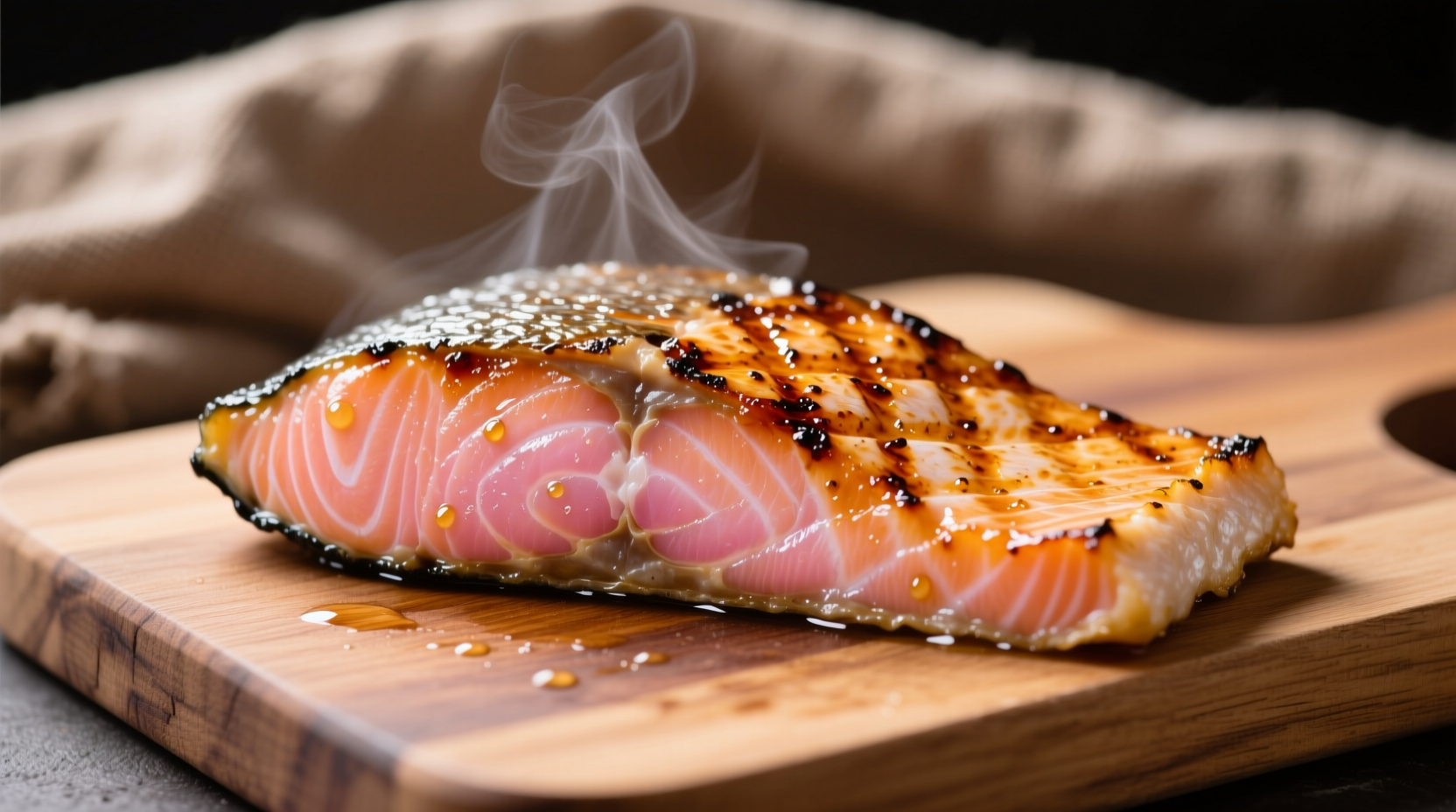Why Grilled Salmon Deserves a Spot on Your Menu
Grilled salmon transforms this nutrient-rich fish into a flavorful centerpiece with minimal effort. Unlike pan-searing, grilling imparts a subtle smokiness while preserving the delicate omega-3 fatty acids that make salmon a American Heart Association-recommended superfood. The high-heat method creates beautiful grill marks while keeping the interior moist—a balance many home cooks struggle to achieve.
Pre-Grill Preparation: Setting Up for Success
Your salmon's journey to perfection begins long before it touches the grill. Start with quality selection—look for firm flesh with a bright color and no fishy odor. Wild-caught salmon typically has a richer flavor, while farmed varieties offer more consistent fat marbling. For grilling, choose center-cut portions at least 1-inch thick to prevent overcooking.
Proper thawing is critical if using frozen salmon. The USDA Food Safety and Inspection Service recommends refrigerator thawing for 24 hours or cold water immersion (changing water every 30 minutes) for 1-2 hours. Never thaw salmon at room temperature to prevent bacterial growth.
| Salmon Type | Best For Grilling | Thickness Recommendation |
|---|---|---|
| Wild Sockeye | Direct heat method | 1-1.5 inches |
| Farmed Atlantic | Indirect heat method | 1.5-2 inches |
| Coho | Either method | 1-1.5 inches |
Seasoning Strategies for Maximum Flavor Impact
Simplicity often yields the best results with grilled salmon. A professional chef's secret: season with salt 15 minutes before grilling to allow penetration without drawing out moisture. Create a balanced flavor profile with these combinations:
- Classic Mediterranean: Lemon zest, garlic powder, dried oregano, and extra virgin olive oil
- Asian-Inspired: Ginger paste, sesame oil, and a touch of honey (add after flipping to prevent burning)
- Smoky Southwest: Chipotle powder, cumin, and lime juice
Apply oil directly to the salmon rather than the grill grates for better adhesion. Use high-smoke point oils like avocado or grapeseed oil—never spray oil directly onto a lit grill, which can cause dangerous flare-ups.

Mastering Grill Temperature and Technique
Temperature control separates good grilled salmon from great. Preheat your grill to 375-400°F—hot enough to create grill marks but not so hot that the exterior burns before the interior cooks. For gas grills, use medium-high heat; for charcoal, arrange coals for two-zone cooking with one side hotter than the other.
The oiling technique matters more than most realize. Dip a folded paper towel in oil, grip with tongs, and rub thoroughly across the grates. This creates a protective barrier that prevents sticking. Wait until the oil stops smoking before adding salmon—this indicates the proper temperature for clean release.
Step-by-Step Grilling Process
- Place salmon skin-side down at a 45° angle to the grates for attractive crosshatch marks
- Cook undisturbed for 80% of total time (about 8-10 minutes for 1-inch thick)
- Check for natural release—salmon will lift easily when ready to flip
- Flip only if using thick cuts (over 1.5 inches); otherwise, finish cooking skin-side down
- Insert thermometer horizontally into thickest part to verify 145°F internal temperature
- Rest for 5 minutes before serving to allow juices to redistribute
Visual doneness cues include opaque flesh that flakes slightly when pressed and a slight translucency in the very center that disappears during resting. The FDA's Food Code confirms 145°F as the safe minimum internal temperature for fish, measured with a food thermometer.
Troubleshooting Common Grilling Challenges
Problem: Salmon sticks to the grill
Solution: Ensure proper preheating and oiling. Wait until the fish naturally releases before attempting to flip. If using skinless fillets, place on a cedar plank or grill basket.
Problem: Uneven cooking
Solution: Position thicker parts toward hotter areas of the grill. For gas grills, turn off burners directly beneath thinner sections.
Problem: Excessive flare-ups
Solution: Move salmon to cooler zone temporarily. Trim excess fat from edges before grilling. Keep a spray bottle of water nearby for emergencies.
Serving and Pairing Perfection
Resting time is non-negotiable for juicy results—those 5 minutes allow residual heat to finish cooking while redistributing juices. Serve with complementary sides that balance salmon's richness:
- Acidic elements: Lemon-dill sauce or citrus salsa
- Creamy textures: Asparagus with hollandaise or roasted potatoes
- Crunch contrast: Grilled asparagus or cucumber salad
Leftover grilled salmon shines in next-day applications. Flake it into salads, mix with cream cheese for sandwiches, or incorporate into grain bowls. Properly stored in an airtight container, cooked salmon remains safe to eat for 3-4 days according to USDA guidelines.











 浙公网安备
33010002000092号
浙公网安备
33010002000092号 浙B2-20120091-4
浙B2-20120091-4